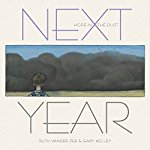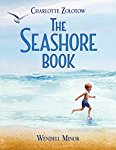Today I bring your the story of another dance school where all are welcome. In this particular case the newest student is rather unusual, and she also presents the teacher with some unexpected problems to solve.
 Dance is for Everyone
Dance is for EveryoneAndrea Zuill
Picture Book
For ages 4 to 6
Sterling, 2017, 978-1-4549-2114-1
One day a rather unusual new student comes to Mrs. Iraina’s ballet class. The student is a very large and very green 450-pound alligator. Not surprisingly no one makes a fuss when the alligator starts working at the barre with the other students. Although the alligator does not understand human speech, she is very good at following along and so that is what she does.
The students get used to having the alligator in the class and they even decide to give her a name. They call her Tanya because she looks rather like a famous prima ballerina called Tanya Prefontaine. The problem with Tanya is that she is too strong, and her tail has a habit of getting in the way. She really is too big for Mrs. Iraina’s human-sized dance studio.
In short, Mrs. Iraina and her students have a problem and they have no idea what to do about it. They don’t want to hurt Tanya’s feelings because this might make her “grumpy or bitey.” And even if they did try to talk to Tanya about her wayward tail and supersized strength, there is no way to convey what they want to say because none of them speak alligator.
Mrs. Iraina and her students are going to have to come up come up with a solution that will work for everyone.
Sometimes someone joins a group who is a little different and who perhaps does not quite fit in. All too often this person is made to feel that they don’t belong and cannot be a part of the group. In this delightful picture book a ballet teacher and her students find a creative way to make an alligator feel welcome in their dance class. They choose the path of inclusion rather than exclusion. Of course, they also show very good sense because we are, after all, talking about an alligator, and upsetting an alligator is probably not a good idea!







